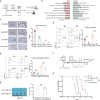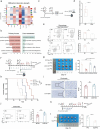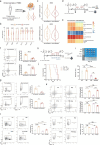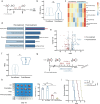Immunosuppressive microenvironment of liver restrains chemotherapeutic efficacy in triple-negative breast cancer
- PMID: 40050043
- PMCID: PMC12182172
- DOI: 10.1136/jitc-2024-010871
Immunosuppressive microenvironment of liver restrains chemotherapeutic efficacy in triple-negative breast cancer
Abstract
Background: Patients with liver metastases of triple-negative breast cancer (TNBC) show poor prognosis compared with other metastases. Chemotherapy is the primary treatment for advanced TNBC. Tumor cell diversity and the tumor microenvironment could affect therapeutic effect. However, whether liver metastases of TNBC exhibit differential chemotherapy efficacy compared with the primary tumors remains inadequately understood. The specific mechanisms that modulate chemotherapy efficacy in liver metastases need further investigation.
Methods: Single-cell RNA sequencing data from public databases were leveraged to contrast the immune profiles of liver metastases and primary tumors in TNBC. Murine models bearing liver tumors or primary tumors of TNBC were used to evaluate chemotherapy efficacy. Techniques such as immunohistochemistry, wound healing assays, and colony formation assays were employed to account for tumor heterogeneity. Intratumoral T lymphocytes and macrophages were quantified and characterized using RNA sequencing, immunohistochemistry, and flow cytometry. Antibody-mediated depletion of CD8+T cells or macrophages in mice substantiated their impact on chemotherapy responses.
Results: Single-cell RNA sequencing data showed the immune microenvironments of liver metastases and primary tumors exhibited significant differences, which may critically influence chemotherapy outcomes. Mouse models confirmed that chemotherapy was less effective against liver tumors compared with subcutaneous tumors. After excluding the influence of tumor cell heterogeneity, the weaker responsiveness in liver tumors was mediated by the impeded infiltration of CD8+T cells, attributed to the decreased activation of macrophages. Augmenting macrophage activation can improve the chemotherapeutic efficacy in liver tumors. Moreover, chemotherapy drove the immune microenvironment towards increased suppression through distinct mechanisms, with neutrophil extracellular traps (NETs) accumulating in liver tumors and impaired functionality of macrophages at the primary site. The combination of NET inhibitors or macrophage activators with chemotherapy enhanced treatment effectiveness.
Conclusions: These findings disclose the compromised chemotherapeutic efficacy in liver tumors of TNBC and elucidate the underlying immune-related mechanisms within the tumor microenvironment. Targeting the specific underpinnings of immune suppression at different tumor sites with selective drugs could optimize chemotherapeutic efficacy.
Keywords: Breast Cancer; Chemotherapy; Immunosuppression; Tumor infiltrating lymphocyte - TIL; Tumor microenvironment - TME.
© Author(s) (or their employer(s)) 2025. Re-use permitted under CC BY-NC. No commercial re-use. See rights and permissions. Published by BMJ Group.
Conflict of interest statement
Competing interests: No, there are no competing interests.
Figures






References
MeSH terms
LinkOut - more resources
Full Text Sources
Medical
Research Materials
